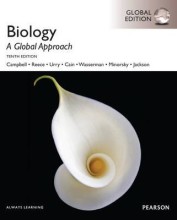Australia - Wine Laws & Regulations - System of Geographical Indications (GIs)
5 important questions on Australia - Wine Laws & Regulations - System of Geographical Indications (GIs)
What does the GI system of Australia give producers. How many GIs are defined?
- A Geographical Indication system gives the producers a range of labelling options.
- 65 GIs in total
- Western Australia: 9
- South Australia: 18
- Queensland: 2
- New South Wales:14
- Victoria: 21
- Tasmania: 1
I.e. Eden Valley, Barossa, Adelaide, South Australia or South Eastern Australia.
Usually it reflects multi-regional blending of grapes.
What is a Zone as part of the GI system of Australia? Which are these?
- The largest wine areas and can cover an entire state. No rules and requirements for boundaries, shared geographic or climatic characteristics.
- Entire states are: South Australia, Victoria, New South Wales and Western Australia.
- South Eastern Australia covers several.
What is a region as part of the Australian GI system. What are the regulations.
- Smaller wine region than a zone, 65 are registered and vary in size.
- Have consistent and distinct qualities.
- Must produce at least 500 tonnes of grapes a year
- min 5 different vineyard owners
- min 5 ha per owner
- samples: Coonawarra, Clare Valley, Margaret River.
- Tasmania is seen as a region.
- Higher grades + faster learning
- Never study anything twice
- 100% sure, 100% understanding
Australia indicates sub-regions within the GI system. What is recognised in these regions.
- Recognised are particular climates, topography and soils.
- Currently 14 sub-regions are registered.
In 1990 Australia introduced a LIP programme. What is covered with this wine labelling programme?
- If a GI, vintage or grape variety is mentioned on the label, 85% of the grapes must be conform.
- Multiple varieties must be listed in descending order.
- Growers, producers and suppliers are audited by the Australia Grape and Wine Authority (trading as Wine Australia).
- There are no GI based rules regarding grape growing and winemaking.
Try our study magic for free
a PDF, study it super fast
- No sign up, email or credit card needed!
- AI makes unlimited flashcards
- Get unlimited quizzes and tests
- Ask AI anything
Create a notebook
- No sign up, email or credit card needed!
- Have and keep perfect overview
- Make flashcards, notes and mind maps
- Review, test and score!
The question on the page originate from the summary of the following study material:
- A unique study and practice tool
- Never study anything twice again
- Get the grades you hope for
- 100% sure, 100% understanding
Remember faster, study better. Scientifically proven.
































